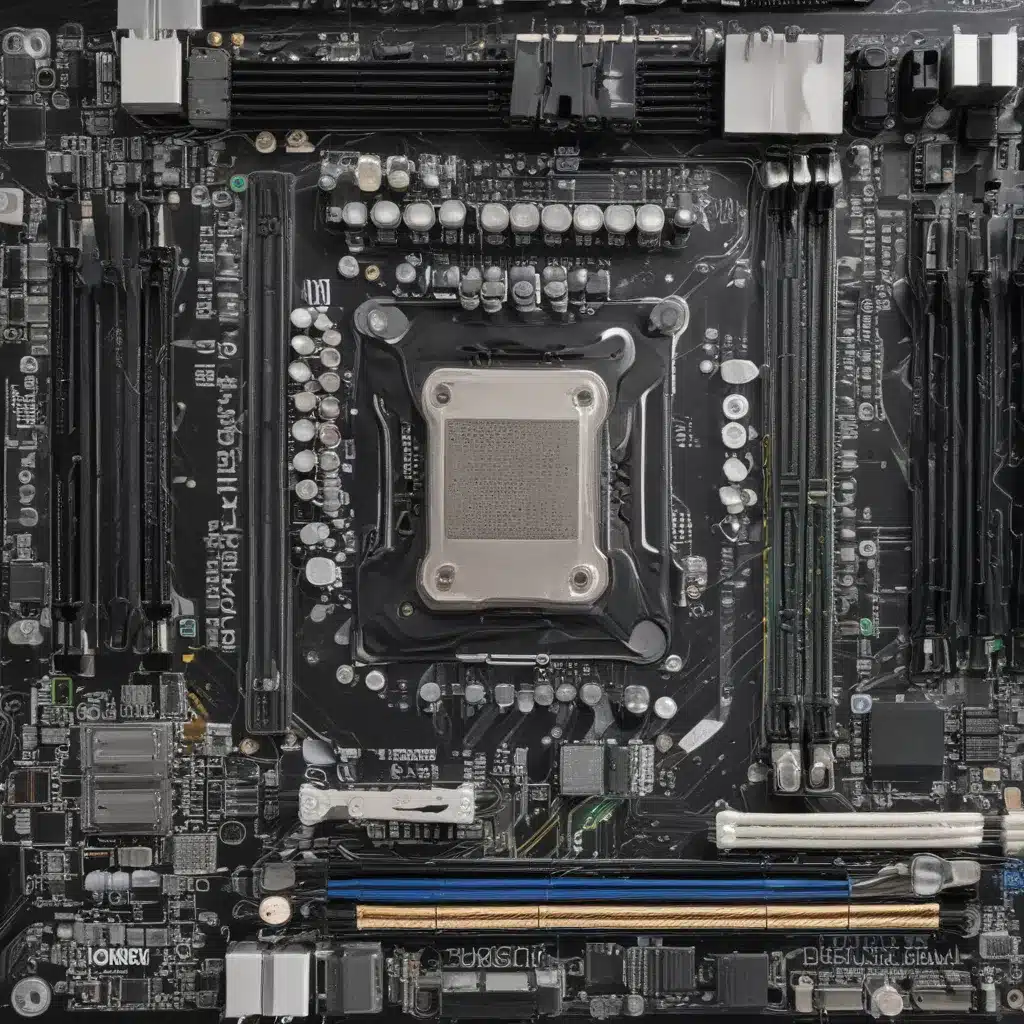Futureproofing Your PC for AM5 and PCIe Gen 5 – X670E Motherboards Explained
Preparing for the Next Gen
Alright, folks – if you’re anything like me, you’re the type who gets giddy over the prospect of building a brand new gaming rig. The thrill of carefully selecting each component, meticulously assembling the pieces, and then witnessing that moment when you press the power button and your creation roars to life – it’s an experience that never gets old.
But let’s be honest, diving headfirst into the latest and greatest tech isn’t always the wisest move. As tempting as it might be to snag the shiny new AMD Ryzen 7000 series CPU and pair it with the cutting-edge X670E motherboard, is it really worth the price premium over more affordable options? That’s the question I’ve been wrestling with, and after delving deep into the research, I’ve got some insights to share.
Assessing the AM5 Landscape
You see, the transition to AMD’s new AM5 socket and the accompanying X670E chipset is a bit of a double-edged sword. On one hand, it brings a wealth of exciting new features and capabilities to the table – think PCIe 5.0, super-fast DDR5 memory, and an abundance of high-speed USB connectivity. [1] But on the other hand, this new platform also comes with a hefty price tag, and the performance gains over the previous-gen AM4 setup might not be as substantial as you might expect. [2]
Let’s dive a little deeper. The whole premise behind investing in AM5 and X670E is the idea of “futureproofing” your system – the notion that by embracing the latest and greatest tech, your PC will remain relevant and capable for years to come. But as I was perusing the forums, I came across some interesting perspectives that made me pause and rethink this notion. [3]
Questioning the Hype
One Redditor put it quite bluntly: “I’m trying to build a PC for the first time since 2018 and I’m looking at the Zen 4 AMD CPUs and I’m thinking is it actually worth right now? Essentially paying extra to be an early adopter and use DDR5 ram and new expensive motherboards for supposedly not a lot of performance difference to say a 5800x3d with 3600mhz DDR4.” [2]
Now, that’s a fair point. If the performance gains aren’t all that substantial, is it really worth the premium price tag? After all, I’m the kind of person who likes to get a good bang for my buck. And let’s be honest, I’m probably going to upgrade my rig again in 4 or 5 years anyway – do I really need to be on the bleeding edge of technology right now?
Weighing the Pros and Cons
As I continued to research, I stumbled upon an interesting article that delved deeper into the longevity of the AM5 platform. [5] The general consensus seems to be that while AM5 and PCIe 5.0 do offer some exciting future-facing capabilities, the benefits may not be as immediately tangible for the average user.
For instance, the author pointed out that current GPUs aren’t really able to take full advantage of PCIe 5.0’s bandwidth, so the performance gains might be negligible. [6] And when it comes to storage, sure, the speedy PCIe 5.0 SSDs are tantalizing, but a good PCIe 4.0 drive is still more than sufficient for most use cases. [7]
The X670E Motherboard Conundrum
Now, let’s talk about the X670E motherboards specifically. These are the flagship models designed to squeeze every last drop of performance out of the Ryzen 7000 series CPUs. And boy, do they pack a punch. We’re talking 18+2 power stages, PCIe 5.0 slots, USB 4 ports, and enough M.2 slots to keep even the most storage-hungry user satisfied. [3]
But here’s the rub – these bad boys don’t come cheap. We’re talking upwards of £600 for the top-tier models. [4] And honestly, unless you’re planning to push your system to the absolute limits with extreme overclocking or the latest and greatest hardware, you might be better off saving your pennies and going with a more affordable B650 or even an X570 board.
Making the Smart Choice
So, what’s the verdict? Should you dive headfirst into the AM5 and X670E ecosystem, or is it wiser to stick with the tried-and-true AM4 platform for now? In my humble opinion, it really comes down to your specific needs and budget.
If you’re the type who absolutely must have the latest and greatest, and you have the deep pockets to match, then by all means, go for it. Treat yourself to that shiny new Ryzen 9 7950X and pair it with an X670E motherboard of your choosing. You’ll undoubtedly enjoy a fantastic gaming experience, and you’ll be set for years to come.
But for the rest of us mere mortals, I’d say it’s worth taking a step back and really evaluating your usage patterns. If you’re primarily a casual gamer who just wants to enjoy the latest titles without fussing over the minutiae, then a well-equipped AM4 setup with a Ryzen 5800X3D might be the smarter choice. [6]
After all, as one Redditor so eloquently put it, “I have no doubt there’s several reasons to go to AM5 with PCIE gen 5. However I use my desktop for basically YouTube, internet, and pure gaming.” [6] Sometimes, the best way to futureproof your rig is to focus on the essentials and not get too caught up in the hype.
So, there you have it, folks. The decision between AM5 and AM4 is a tricky one, and only you can determine which path is the right one for your needs and budget. But remember, the most important thing is to have fun and enjoy the process of building your perfect gaming machine. Happy tinkering!













